British Horror Films: Peeping Toms and Pagan Sacrifice
This list offers exemplary British horror films from the Silent Era to the modern age. Each with scares and cinematography skills that delightfully deliver!

England is known for several pop-culture exports spanning music, comedy, and film, but it doesn’t have much of a reputation as a Mecca for horror films. Perhaps British propriety deems such exploits to be cheap and low.
This is despite the fact that England not only gave birth to the greatest horror director in film history and possibly the greatest director of all time Alfred Hitchcock, it also gave us Peter Cushing, Christopher Lee, and the endlessly beautiful girls in all of the famous Hammer Horror films of the 1960s and 1970s.
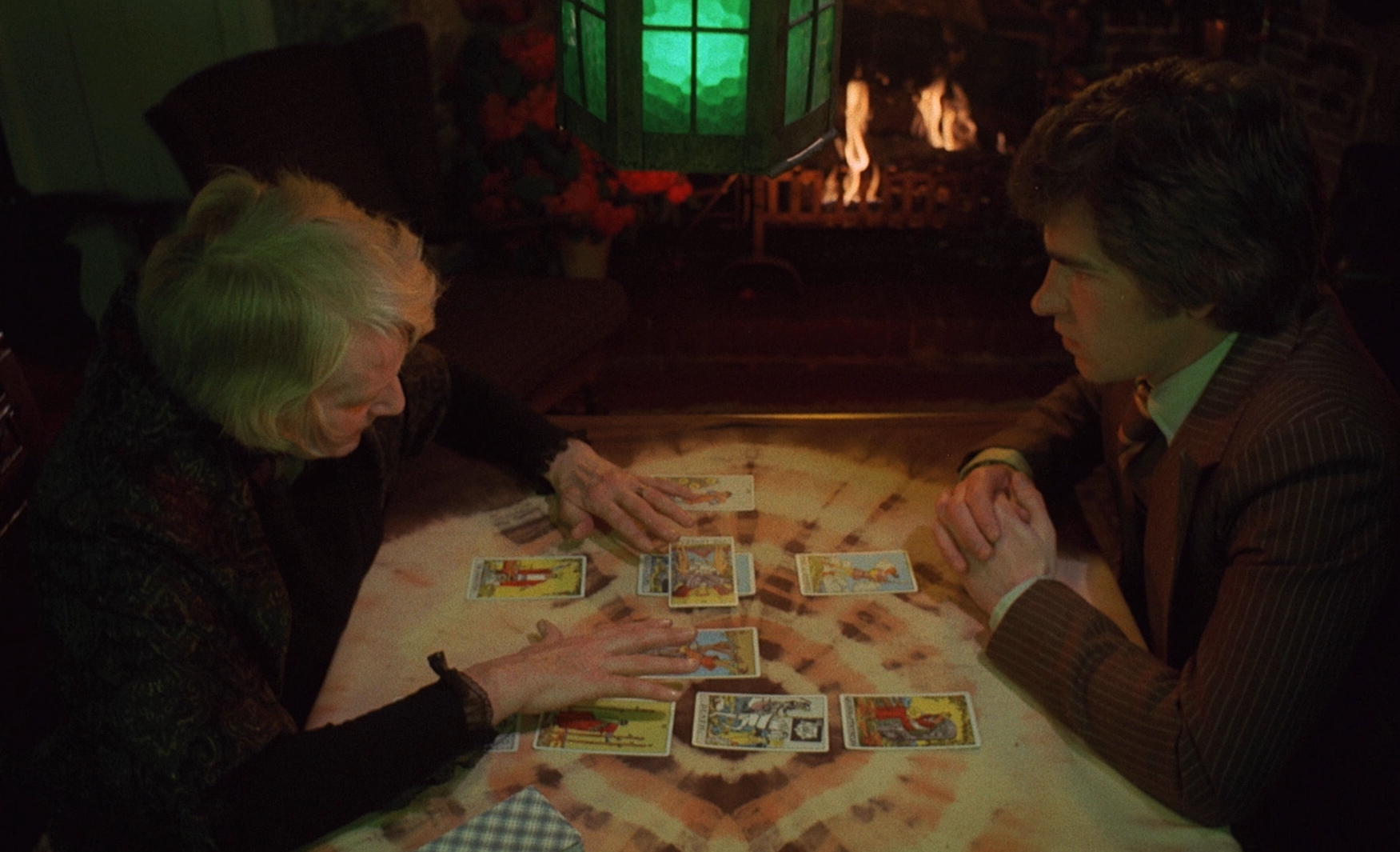
One theme that keeps cropping up in British horror, though, is the cultural tension between modern Middle Eastern religions and ancient indigenous pagan beliefs. This is illustrated in films below such as The Man Without a Soul, The Witches, Witchfinder General, Wicker Man, and Darklands.
Here are great examples of exemplary British horror films all the way from the Silent Era into the modern age.
Dr. Trimball’s Verdict (1913)
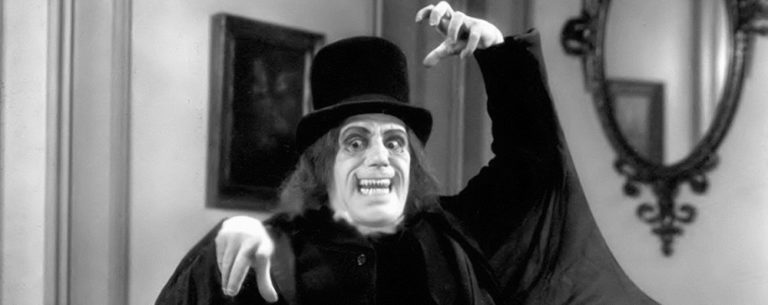
In this 12-minute very early example of British horror, a doctor mentally manipulates his romantic rival to the point where the man kills himself. Although he gets to marry the woman he wanted, years later the doctor realizes to his horror that a skeleton he’d bought for medical purposes is slowly reanimating as the body of his dead friend.
The Man Without a Soul (1916)
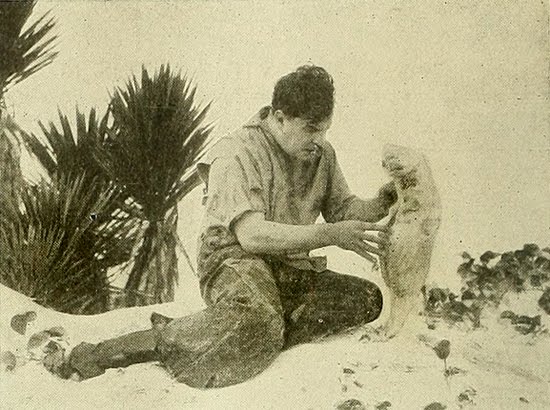
Based very loosely on the Frankenstein myth but focused more intently on religion and loss since this was being filmed in the midst of the unprecedented horrors and carnage of World War I, The Man Without a Soul tells the story of a young divinity student who dies way before his time. Although a local vicar is devastated by the loss, a local agnostic devises a way to reanimate the young student’s corpse—except, and this is crucial, the student no longer has a soul. The agnostic then has to find a way to kill the reanimated student so that he stops murdering people.
The Beetle (1919)
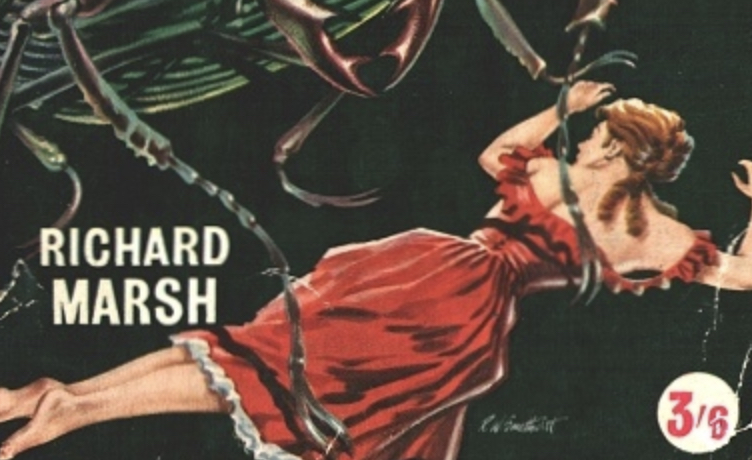
Based on a gothic short story from 1897 of the same name, The Beetle tells the tale of a beautiful Egyptian princess who dies but whose soul lives on in the form of a spirit who possesses the bodies of the weak. A member of the British Parliament who had traveled to Egypt 20 years prior had been seduced by the princess, who then captured him and used him as a sex slave. He strangled her to death, whereupon she transformed as a beetle. But 20 years later, she returns to seek vengeance against him.
The Lodger: A Story of the London Fog (1927)

This is legendary director Alfred Hitchcock’s third film and is considered by many to be the first “true” Hitchcock movie. It’s based on the book The Lodger, which speculated about identity of the perpetrator behind the Jack the Ripper murders. A man rents a room in London during a mysterious murder spree where someone is exclusively killing blonde women. Gradually, the landlady begins to suspect that her new lodger is the killer. TV Guide said that despite its age, The Lodger “is still surprisingly suspenseful and entertaining, thanks to Hitchcock’s burgeoning mastery of film grammar and audience manipulation.”
Chamber of Horrors (1929)
In this British film that was made right at the tail end of the Silent Era, a man winds up spending the night in the Chamber of Horrors section of Madame Tussauds Wax Museum. While sleeping there, he dreams that he murdered his mistress, leading him to rapidly lose his sanity throughout the night.
The Man Who Changed His Mind (1936)
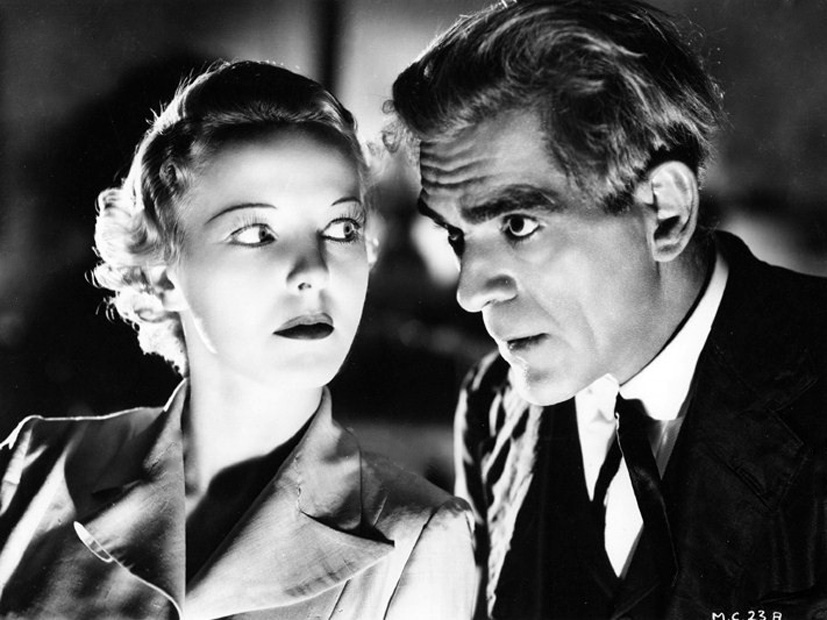
A mad British scientist conducts experiments trying to figure out how to transfer people’s minds from body to body. He starts with simians and then graduates to humans—and he’s naïve enough to think he can simultaneously transfer someone’s mind and brain to someone else’s body. Also released under the titles The Man Who Lived Again and Dr. Maniac.
Dead of Night (1945)

Widely considered the best horror anthology film ever made, Dead of Night tells five different stories from four different directors. Its framing device involves a group who find themselves all together at a remote country estate for reasons which are unclear to them. Then they start relaying their own personal dreams and nightmares. There’s a haunted mirror, a hearse driven by a ghoul, and a ventriloquist who goes insane after his mannequin comes to life.
The anthology is a favorite of director Martin Scorsese who described it as, “A British classic: four tales told by four strangers mysteriously gathered in a country house, each one extremely disquieting, climaxing with a montage in which elements from all the stories converge into a crescendo of madness.”
Fiend Without a Face (1958)

The end of World War II—which happened after US forces dropped two atomic bombs on Japan—ushered in the terrifying idea that atomic radiation could wipe out the planet at any moment, which is why radiation so often figured as a plot element in 1950s horror films. Based on a 1930 short story called “The Thought Monster,” Fiend Without a Face deals with a spate of mysterious deaths near an American army base in which victims are found with their brains and spinal columns missing. It turns out that an alien life force is using the spine/brain creatures to rain hell down upon the stupid earthlings.
Dracula (1958)
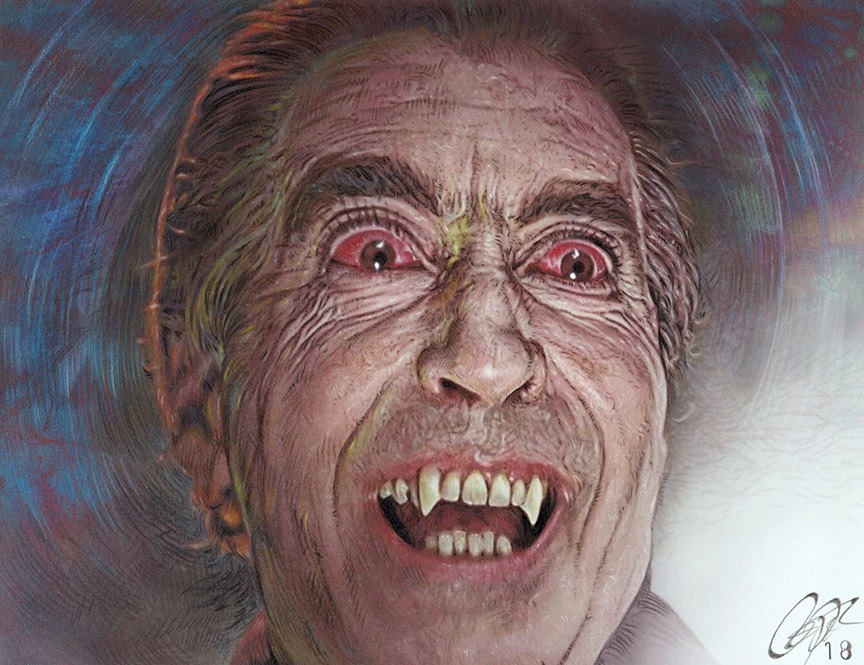
Released as Horror of Dracula in the USA to avoid confusion with the 1931 Bela Lugosi classic, this 1958 offering from Hammer Horror is often favorably compared to the original—especially the performance of Christopher Lee in the title role. The film is set in 1885 and involves a vampire hunter who takes residence in Dracula’s castle under the ruse that he is a simple, innocent librarian. British writer Chrisopher Frayling wrote, “Dracula introduced fangs, red contact lenses, décolletage, ready-prepared wooden stakes and – in the celebrated credits sequence – blood being spattered from off-screen over the Count’s coffin.”
Village of the Damned (1960)

Adapted from the novel The Midwich Cuckoos by John Wyndham, Village of the Damned involves a sleepy rural English burg where everyone inexplicably falls asleep, then awakes months later to discover every female in the village is pregnant. And there’s something disturbing about the children who are born from this mystery mass impregnation—they have glowing white eyes and platinum-blonde hair. They are also telepathic and begin using their powers to force people to do things against their will.
Peeping Tom (1960)

Banned almost immediately upon its release not only due to the fact that it is the first British film to show female nudity but also due to its razor-sharp depiction of a psychotic serial killer, Peeping Tom is now considered a masterpiece and one of the finest British films ever made. Mark Lewis (Carl Boehm) is a socially awkward photographer who enjoys filming women’s facial expressions while he kills them. Martin Scorsese said that any aspirant filmmaker only needed to watch two films to learn everything they needed to know—8-1/2 by Federico Fellini and Peeping Tom by Michael Powell, whose career was ruined by the outrage that greeted this film.
The Innocents (1961)
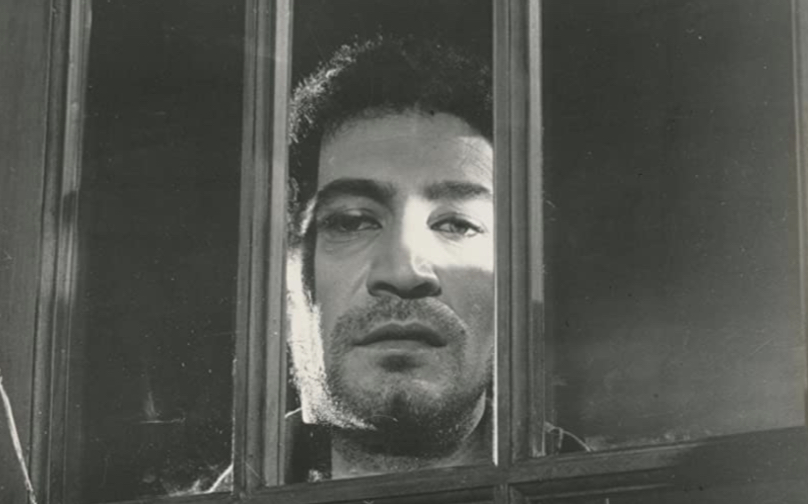
Based on the Henry James novel The Turn of the Screw and considered one of the finest horror films ever made—Truman Capote cowrote the screenplay—The Innocents casts Deborah Kerr as a governess who slowly realizes to her horror that the house where she works is haunted. The Village Voice suggested that the film is “the finest, smartest, most visually savvy horror film ever made by a big studio.”
Day Of The Triffids (1962)

Although plants rarely evoke horror, it’s astonishing how often they appear in horror movies as the villains. For example, the murderer in Little Shop of Horrors is an oversized Venus Fly Trap plant, whereas the killer in From Hell it Came is a violent tree who just so happens to be gifted with the ability to walk. The film Day of the Triffids is based on a 1951 novel of the same name in which a “triffid” is an ambulatory carnivorous plant. They are able to sting their prey and kill them before devouring them. Toward the film’s end, they are prevented from decimating human life as we know it after someone realizes they can be killed with a common table condiment.
The Haunting (1963)

Director Robert Wise lensed this horror classic right before achieving international fame as the director of the award-winning The Sound of Music. Based on Shirley Jackson’s 1959 book The Haunting of Hill House, the film depicts a paranormal investigator who invites a small group of people to help him research a house that is rumored to be haunted. Martin Scorsese ranked it as the scariest horror film ever made.
The Damned (1963)

This Hammer Film production was based on a 1960 novel called The Children of the Light. It was filmed in 1961 but its release was delayed for two years after internal squabblings between the director and the producer led to several scenes being cut. It didn’t make its way to the United States until 1965 under the title These Are the Damned. Superficially, the plot involves an American man who falls in love with the sister of the leader of a British biker gang, played by hard-partying madman actor Oliver Reed. But the title refers to a group of nine children who live underground but whose immunity to radiation—they were born radioactive—means they may be the only humans to survive an imminent nuclear apocalypse.
Children of the Damned (1964)

In this sequel to 1960’s Village of the Damned, six children who were born without fathers all share telepathic powers and an extremely high IQ. It turns out that they are not aliens but rather extremely advanced humans who’ve evolved about a million years beyond all other humans. When the children realize the military wants to experiment on them, they hole up together in an abandoned church and warn the military to leave them alone. Also released as The Children Return.
Repulsion (1965)

In what is widely considered notorious expat director Roman Polanski’s finest film, the beautiful Catherine Deneuve stars as a Belgian manicurist living in London who finds herself feeling isolated and misunderstood. Then she turns to serial killing. IndieWire enthuses that “Deneuve’s depiction of a serial killer losing her mind is timeless. Unlike so many other horror films, Repulsion makes normal household items — mirrors, razor blades, rugs — horrific and otherworldly.”
Fanatic (1965)

Yet another offering from Hammer Horror, Fanatic involves a young woman whose fiancé died, leading the man’s mother to blame the woman and terrorize her endlessly as a result. Terror Trap calls the film “Delightful all around.” Fanatic was also released with the much more sensational title of Die! Die! My Darling!, which led punk rock band The Misfits to write a song with that title.
The Reptile (1966)

Hammer Films made this movie simultaneously with The Plague of the Zombies and used many of the same cast members and sets. Set around 1900 in a small village near Cornwall, The Reptile involves a spate of deaths that some fear is a return of the bubonic plague. And then people start to realize that every one of the dead has the same reptilian bite mark on their necks.
The Witches (1966)

So many British horror films seem to involve the nation’s ancient pagan past, and The Witches is no exception. A British schoolteacher who suffered a nervous breakdown in South Africa arrives at a small rural English village to accept a teaching job and decompress. The village practices ancient Celtic pagan rites and is led by a woman. Whereas everything seems happy and harmonious at the beginning, the teacher realizes to her horror that the villagers see nothing wrong with sacrificing humans to appease their pagan gods.
Witchfinder General (1968)
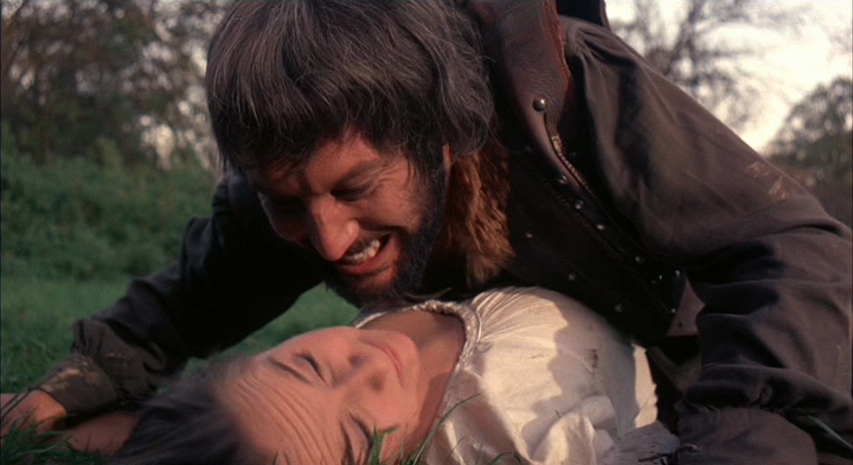
Set in the 1600s while the British monarchy was struggling for power against insurgent forces led by Oliver Cromwell, this film features Vincent price in what he said was the best performance of his entire career. Price stars as Matthew Hopkins, a real-life historical opportunist who made money by falsely accusing peasants of being witches and whipping up hostility against them. The Village Voice said that despite the era in which the film was set, Witchfinder General “remains contemporary, and even frightening, in its evocation of cynical Puritanism and mass deception.” The film’s director, Michael Reeves, died of a drug overdose before the movie was released. Witchfinder General was also released as The Conqueror Worm.
The Abominable Doctor Phibes (1970)
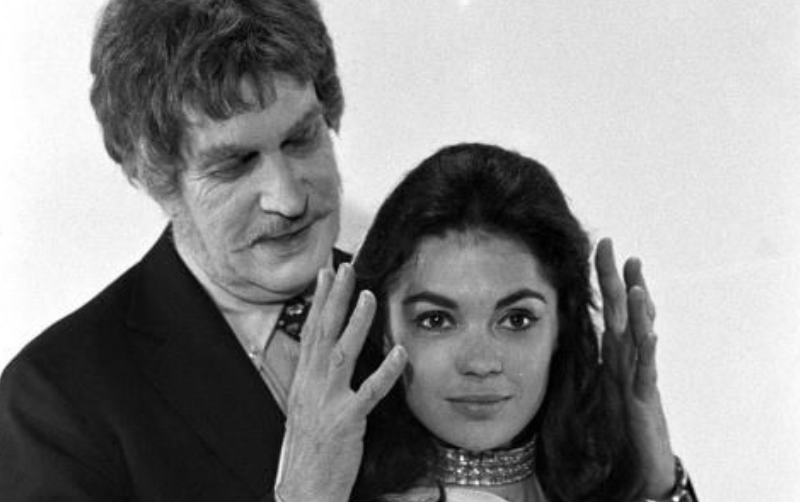
Vincent Price stars as famed concert organist Dr. Anton Phibes—rhymes with “vibes”—who blames his wife’s death four years earlier on the ineptitude of the surgeons who were operating on her when she died. He plans to kill them all, using the biblical Ten Plagues of Egypt as his template for the murders. With each murder, he wears an amulet containing a Hebrew letter that corresponds to the killing method in question. Cleveland Memory calls it “a funny, campy horror picture that works.”
The House That Dripped Blood (1971)
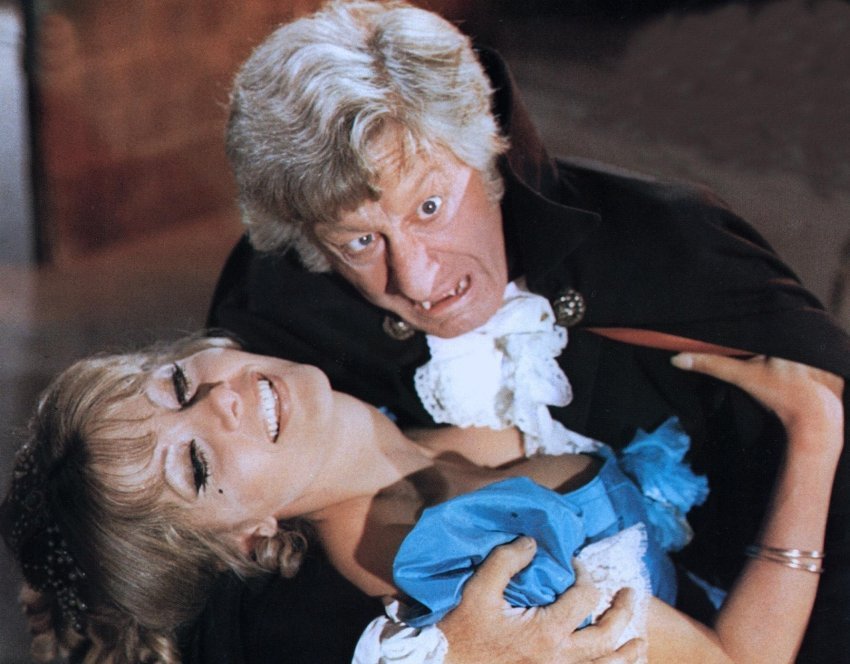
British horror stalwarts Christopher Lee and Peter Cushing star in this horror anthology that weaves together four separate stories with the common element being their relationship to the building named in the title. Throughout “Method for Murder,” “Waxworks,” “Sweets for the Sweet,” and “The Cloak,” the common theme is that anyone who is remotely sensible would never move into a house that drips blood.
The Devils (1971)

Director Ken Russell is known for his lavish, orgiastic sense of excess, and this film is a prime example. Set in France in the year 1634, it involves a priest who tries to protect a small French village from the Catholic Church’s predations. Roger Ebert says plot elements include “burning at the stake, an afternoon in the rack, headscrews, a douche with boiling water, nails into hands, induced vomiting, ripped tongues, dead babies, human target practice, possession by devils, rape, transvestism, [and] nude orgies in the nunnery.” The film was deemed to be so extreme that not only was it was banned in Italy, the Italian government warned actors Vanessa Redgrave and Oliver Reed never to set foot in their country if they didn’t want to spend three years in prison.
Straw Dogs (1971)
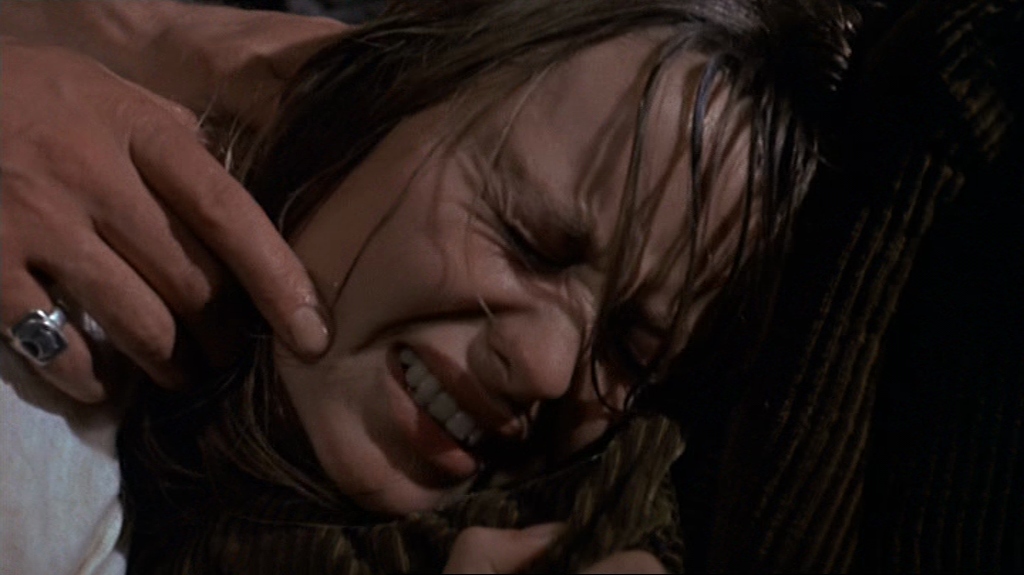
Director Sam Peckinpah is a master of cinematic violence, and this ruthlessly violent film is considered his masterwork. Dustin Hoffman stars as a nerdy American who moves onto a rural English farm with his wife and finds himself immediately bullied by locals who obviously desire his spouse. He winds up being forced to defend the farm and his wife with ruthless violence. The title is based on Taoist philosopher Lao-Tzu’s admonition that “Heaven and Earth are not humane, and regard the people as straw dogs.”
The Wicker Man (1973)

Yet another film that examines the cultural tension between Christianity and ancient paganism in Great Britain, The Wicker Man is based on a 1967 novel called The Ritual. The story involves a police officer who’s a devout Christian and is led to a remote island in search of a missing girl. Once he arrives, he is appalled to find that islanders are pagans who have open sex in the fields and worship the maypole as a phallic symbol. They also burn a giant wicker effigy after a failed harvest. It just so happens to be this Christian policeman’s bad luck that he arrived on the island after a bad harvest.
Frightmare (1974)

A male-female pair of serial killers spends 15 years in prison and are released again. They move into a farmhouse with their two young daughters, but the female part of the murderous duo starts feeling the itch to start killing again. As luck would have it, the pair’s daughters are eager to join in the fun this time around. Terror Trap says, “Good acting by all, a disarming atmosphere, shocking gore and an interesting closing sequence highlight this one.” Also released as Once Upon a Frightmare.
The Omen (1976)

Capitalizing on the massive unprecedented success of satanically themed blockbusters such as Rosemary’s Baby and The Exorcist, this film stars Gregory Peck as the father of a strange child named Damien who, as luck would have it, turns out to be the Antichrist. The film’s production was thought to have been cursed, as it was involved a series of terrifying events such as the fact that both Gregory Peck and screenwriter David Seltzer had their planes struck by lightning en route to filming in England—and they were on two different planes.
Prey (1977)

An alien named Stokes with the face of a dog lands on planet Earth and decides to move into a country house that is occupied by a pair of lesbians. Naturally, things start to go south, especially when Stokes realizes that the women might make a good food source. Terror Trap says the film “isn’t without some bizarre charms…and the sex/rape/gnaw climax manages an odd kind of effective frenzy.”Also released as Alien Prey.
The Shout (1978)

A strange horror movie set in rural Devonshire where a young couple (John Hurt and Susannah York) meet a traveling man named Crossley (Alan Bates) and invite him into their home for dinner. The man claims to have spent time with the Aboriginal people and learned from a shaman how to perform a “terror shout”, a shout so horrifying it causes death to those who hear it. While the couple is skeptical of Crossley’s claims, he slowly uses this magic to take over their lives.
An American Werewolf in London (1981)

This rare horror effort from director John Landis (Animal House, The Blues Brothers) stars David Naughton—previously only known as the star of a Dr. Pepper TV ad—as an American tourist who, against the solemn warnings of local pubgoers, wanders along with his friend in the British moors late at night under a full moon. Both Naughton and his friend are attacked by werewolves, but only Naughton survives. He is repeatedly visited by the corpse of his dead friend, who warns him to kill himself before the next full moon, or else he’ll become a werewolf himself. The film won the first-ever Academy Award for Best Makeup.
The Hunger (1983)

A highly stylized vampire film starring three legitimate sex symbols—blonde bombshell Catherine Deneuve, Susan Sarandon, and rock star David Bowie. The plot involves a love triangle between a vampire couple and a gerontologist who specializes in sleep disorders and aging research. Part of the inner turmoil of Bowie’s character is that although he’s been promised eternal life as a vampire, he suddenly realizes that he is rapidly aging. Susan Sarandon says that she and Bowie had an affair during the filming.
Hellraiser (1987)

The first in a massively successful series of remakes based on director Clive Barker’s novella The Hellbound Heart, Hellraiser also marked Barker’s directorial debut. Normal humanoids must face off with a grotesque race of Cenobites who are led by someone identified in all of the sequels as “Pinhead.” IndieWire called the film a “bold vision” that “mixed S&M darkness with some of the grossest visuals of ’80s cinema.”
Lair of the White Worm (1988)

Very, very loosely based on the novel of the same name by Bram Stoker, this is yet another blasphemy-obssessed offering from the Master of Excess Ken Russell. While excavating a former nuns’ convent, an archeologist finds a strangely shaped skull that may be that of a giant snake. His investigation leads him to a beautiful woman who just happens to be a high priestess in a cult devoted to the snake god.
Hardware (1990)
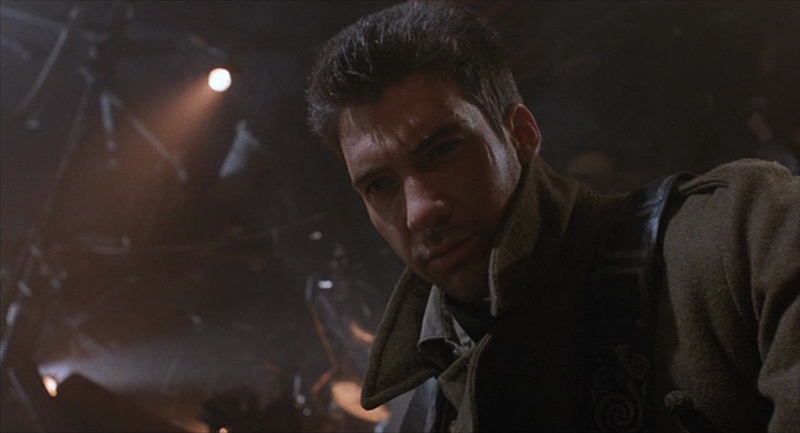
While scavenging through a post-nuclear wasteland, a nomad unearths a robot that he suspects is part of a government plot to create mass-murdering robots to wipe out the bulk of humanity due to a population crisis caused by fecund mutants. TV Guide says the film “is set in an oppressive, post-apocalyptic future world dominated by debris and clunky hardware. Because the environment is contaminated, human life is confined to overcrowded, claustrophobic dwellings.”
Darklands (1996)

Dismissed by UK reviewers as “the Welsh Wicker Man,” Darklands is possibly the first horror film from the tiny nation of Wales. The plot involves a journalist who is investigating the death of a female colleague’s brother. His research leads him to a religious cult and drags him into a hell of witchcraft, devil worship, and human sacrifice. Time Out says that the reporter’s encounter with “an uppity group of Celtic neo-pagans…soon [has] him knee-deep in desecrated churches, slaughtered pigs, crazy priests and a revivalist political conspiracy.”
The Canterville Ghost (1996)
Based on an 1887 Oscar Wilde story of the same name, The Canterville Ghost involves a man who comes to England with his wife and family on a research grant that enables them to live in a castle known as Canterville Hall. Unbeknownst to them, the castle is still haunted by Sir Simon de Canterville, who remains at the castle after his wife’s death. Sir Simon does everything in his ghostly powers to drive the new family away.
28 Days Later (2002)
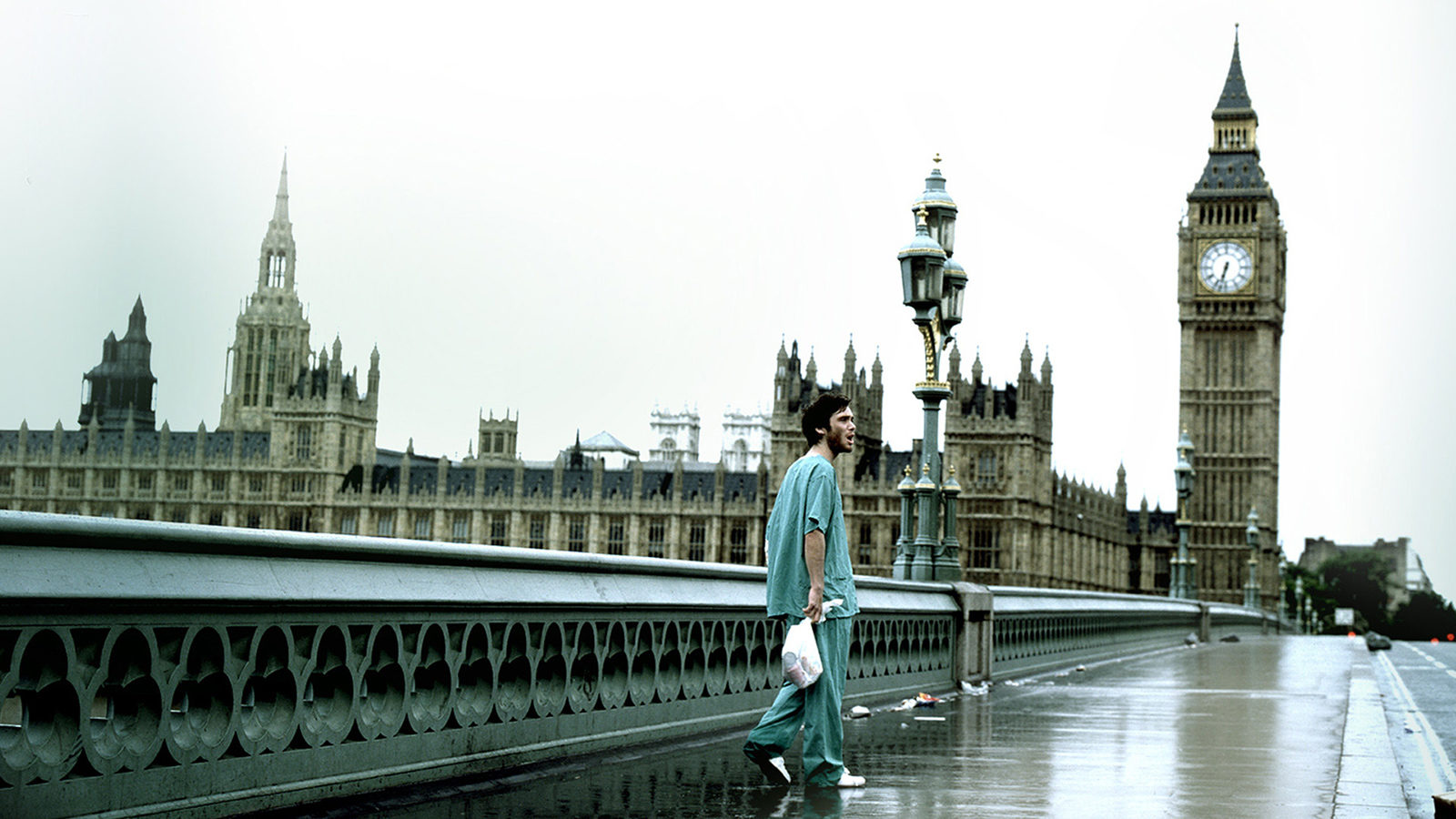
A combination zombie/pandemic film in which animal activists unleash a possibly humankind-destroying virus in the process of freeing animals from their lab cages. A bike messenger named Jim (Cillian Murphy) awakes from a coma 28 days after becoming infected with the virus. As he is released into the streets of London, he finds it to be a devastated ghost town. Roger Ebert called it “a tough, smart, ingenious movie that leads its characters into situations where everything depends on their (and our) understanding of human nature.”
Shaun of the Dead (2004)
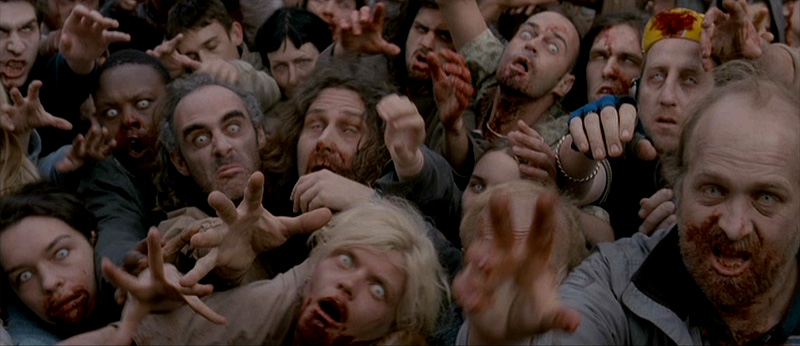
A part-horror/part-parody film that carefully walks the tightrope between the two genres, Shaun of the Dead involves an Average Joe whose life is inconvenienced by the sudden emergence of a zombie apocalypse. Normal people survive the zombie attack, and six months later zombies are integrated into normal society as menial laborers.
Kill List (2011)

A British soldier returns from Kiev and finds that the best way to earn a living is as a hit man. He signs a contract in his own blood promising to murder the people named on the list. The first is a priest. The next is a librarian who has a sick predilection for murder porn. Strangely, all of his victims thank him when they realize he’s about to kill them, suggesting they knew they were at least guilty of something. Roger Ebert says Kill List “begins with verbal violence at a dinner table, continues with actual violence in a hit-man scenario and concludes with metaphysical violence that threatens to decapitate the movie itself. It’s baffling and goofy, blood-soaked and not boring.”
Cruel Summer (2016)

Based on the true story of the murder of an autistic teen named Terry Lee Hurst who was murdered by three teens who buried a scythe in his skull while on a camping trip, Cruel Summer tells the story of an autistic boy named Danny who is set upon by a trio of sadistic teens—two males and a female—who have no direction in life and decide to take out their rootless ennui on Danny.
